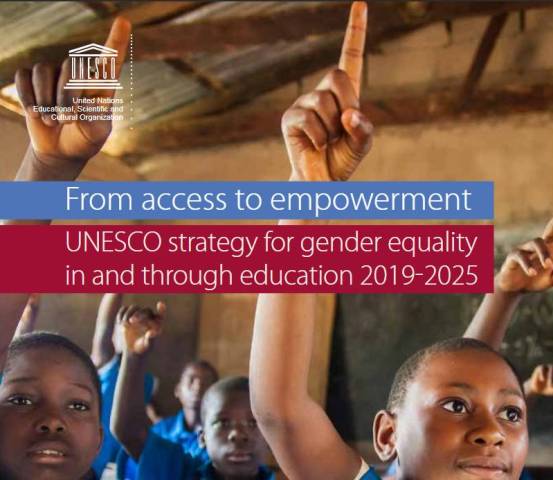
[This is an excerpt from an article in the current edition of The Round Table: The Commonwealth Journal of International Affairs.]
Making Girls’ Education a National Development Priority
Tackling the education deficit for girls will require that it become a national development priority. This will require fully concerted efforts inclusive of anchoring gender-inclusive education strategies in wider national development planning as well as cross-sectoral collaboration to tackle socio-cultural barriers and discrimination. More specifically, barriers related to gender-based violence, sexual and reproductive health, girls’ unpaid work, and limited productive employment opportunities will need to be addressed.
A girl-friendly school environment can make a difference to girls’ enrolment whereas a lack of safe school environments for girls, reinforced by insufficient school infrastructure, can limit access and learning for girls. Girls face additional barriers to both access and learning due to vulnerability to gender-based violence during travel to school and in school. Ensuring that schools are thus safe environments for girls, inclusive of whole-school and community efforts to target school-related gender-based violence, is therefore imperative. Additionally, considering that inequitable classroom environments impede girls’ ability to learn from the early years, efforts to eliminate discrimination by teachers, as well as curricula and materials that perpetuate gender biases and stereotypes restrict girls’ learning, will also be necessary.
If girls’ education is to become a national development priority then it will be necessary to tackle these economic and socio-cultural barriers through cross-sectoral reforms. Moreover, challenging entrenched ideas about the role of women in society and beliefs about the value of girls’ education will be imperative if the economic disadvantages which act as a pervasive barrier to their education as a result, are to be eliminated. One way to do this is to increase girls’ and women in local leadership which has been found to be influential in changing community attitudes and aspirations for girls’ education across the life course.
Furthermore, a lack of employment opportunities for women can lead to lower perceived benefits of girls’ education. Hence, in order to help girls to see the value of an education and to consequently influence their enrolment and learning, it will be important to tackle gender-based discrimination in the labour market.
Conclusion
Leveraging change in girls’ education across the Commonwealth countries will require first and foremost that it remains an issue high on the political agenda. The Commonwealth Heads of Government Meeting can act as an arena to leverage such change, by promoting political leadership to achieving concrete action through commitments to gender equality.
An important message for the Heads of Government is that while the most marginalised girls continue to be left behind in terms of access and learning, a focus on gender parity alone is not enough. There is a vital need to tackle social norms in society that hold back gender equality in education. In some Commonwealth countries, girls’ education has become a lower priority due to the assumption that having the same, and even in some cases more girls in school than boys, and whom at times they out-perform academically, has taken care of the problem. Yet there continues to be a need to tackle discrimination from the early years and create a truly level playing field throughout the education system, including at the transition to adolescence.
Additionally, a commitment at the Commonwealth Heads of Government Meeting to adopting a progressive universalism approach to financing, such that more domestic and international financing is directed towards pre-primary education and specifically targeted towards marginalised girls, will help to change the patterns of disadvantage.
While what works in some contexts might not work in the same way in other settings, it is clear that barriers to education for marginalised girls are mutually reinforcing, suggesting that there is a need to tackle them simultaneously through a combined package of reforms that tackle multiple disadvantages. Visible political commitment and sustained investment is needed for interventions that have been found to work to have impact at scale, and Commonwealth Heads of Government can play an important part in encouraging governments and agencies to implement these in a way that ensures that every girl, everywhere, can access 12 years of quality education.
Rebecca Gordon, Lauren Marston and Pauline Rose are with the Research for Equitable Access and Learning (REAL) Centre, Faculty of Education, University of Cambridge, Cambridge, UK.



